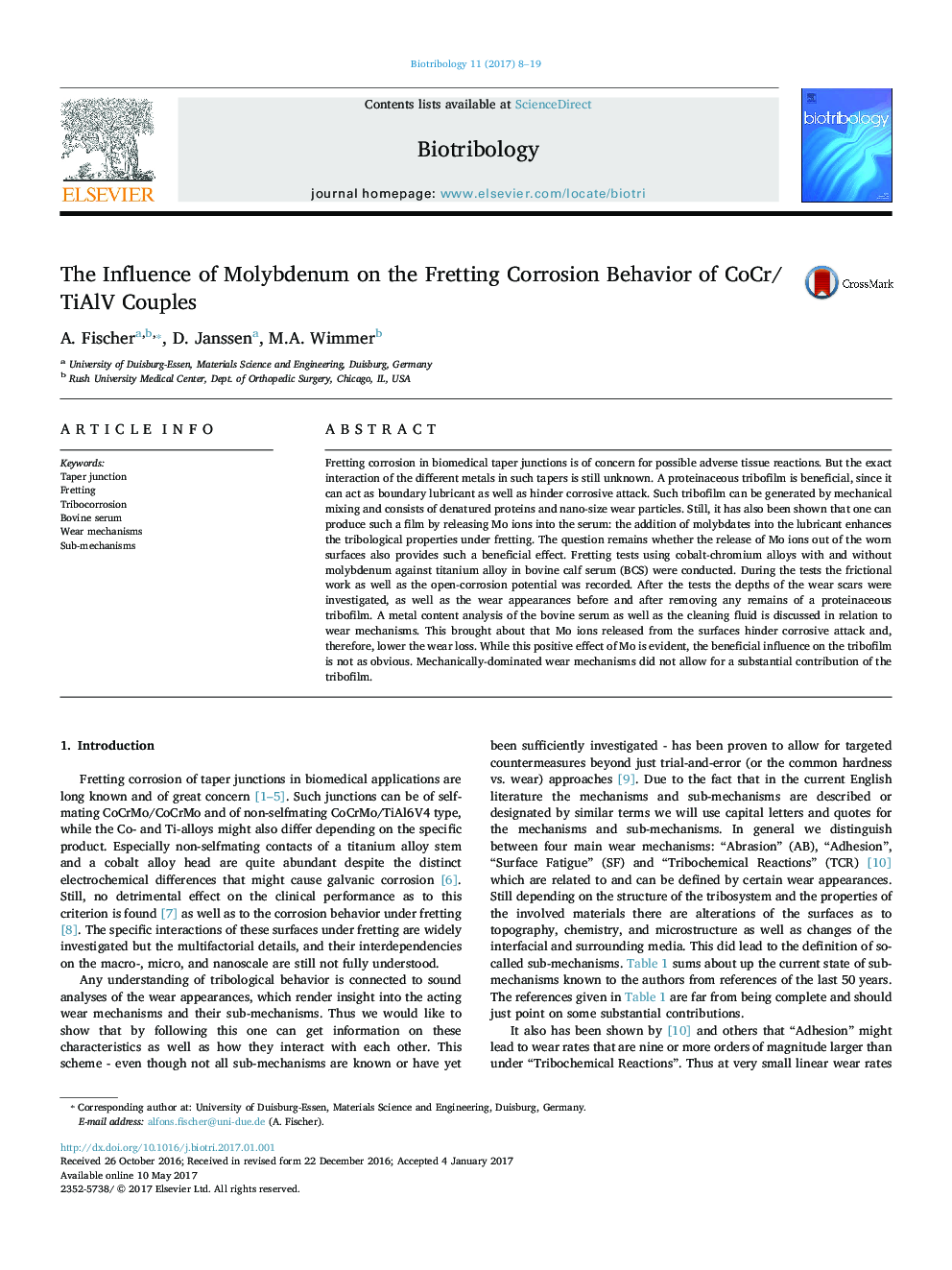| Article ID | Journal | Published Year | Pages | File Type |
|---|---|---|---|---|
| 5011122 | Biotribology | 2017 | 12 Pages |
Fretting corrosion in biomedical taper junctions is of concern for possible adverse tissue reactions. But the exact interaction of the different metals in such tapers is still unknown. A proteinaceous tribofilm is beneficial, since it can act as boundary lubricant as well as hinder corrosive attack. Such tribofilm can be generated by mechanical mixing and consists of denatured proteins and nano-size wear particles. Still, it has also been shown that one can produce such a film by releasing Mo ions into the serum: the addition of molybdates into the lubricant enhances the tribological properties under fretting. The question remains whether the release of Mo ions out of the worn surfaces also provides such a beneficial effect. Fretting tests using cobalt-chromium alloys with and without molybdenum against titanium alloy in bovine calf serum (BCS) were conducted. During the tests the frictional work as well as the open-corrosion potential was recorded. After the tests the depths of the wear scars were investigated, as well as the wear appearances before and after removing any remains of a proteinaceous tribofilm. A metal content analysis of the bovine serum as well as the cleaning fluid is discussed in relation to wear mechanisms. This brought about that Mo ions released from the surfaces hinder corrosive attack and, therefore, lower the wear loss. While this positive effect of Mo is evident, the beneficial influence on the tribofilm is not as obvious. Mechanically-dominated wear mechanisms did not allow for a substantial contribution of the tribofilm.
